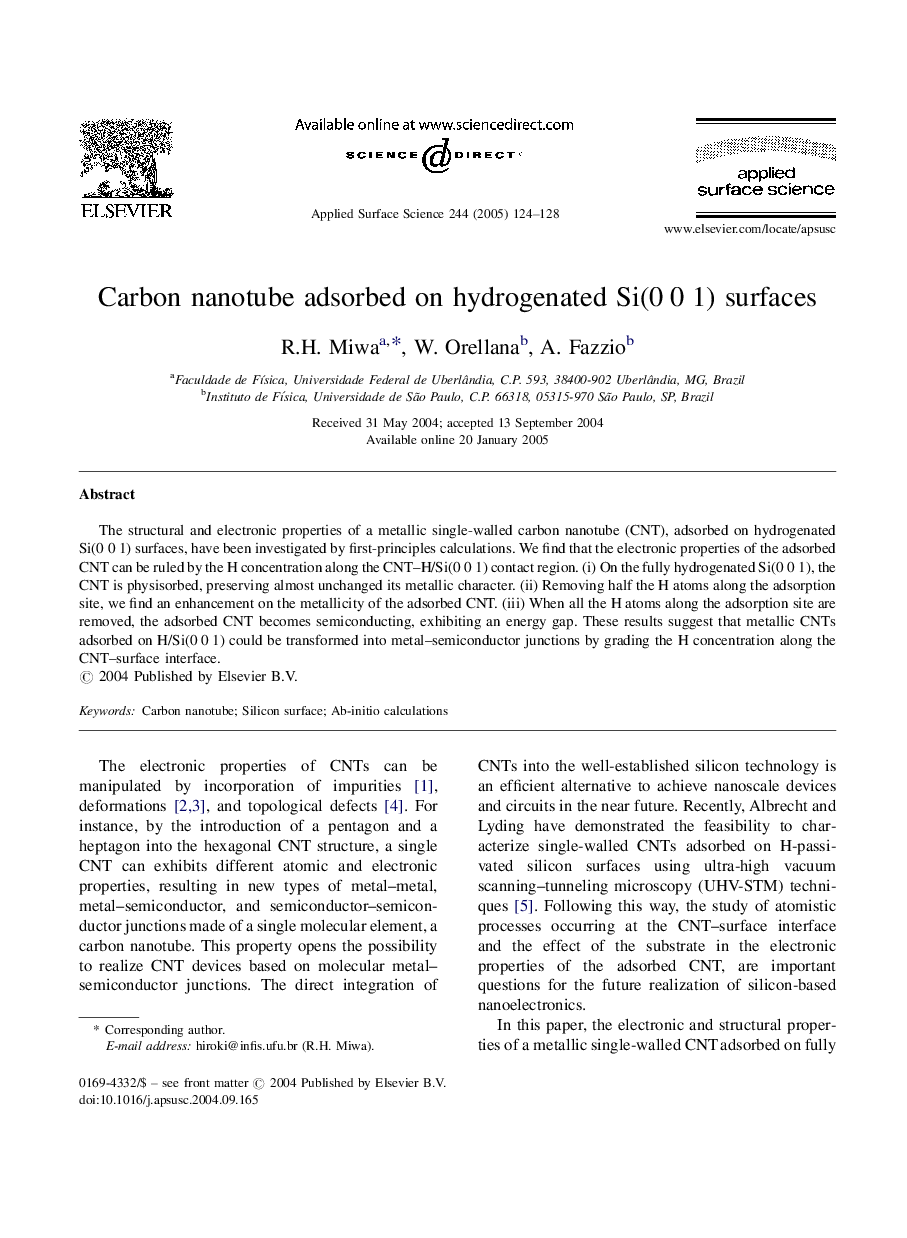| Article ID | Journal | Published Year | Pages | File Type |
|---|---|---|---|---|
| 9567300 | Applied Surface Science | 2005 | 5 Pages |
Abstract
The structural and electronic properties of a metallic single-walled carbon nanotube (CNT), adsorbed on hydrogenated Si(0Â 0Â 1) surfaces, have been investigated by first-principles calculations. We find that the electronic properties of the adsorbed CNT can be ruled by the H concentration along the CNT-H/Si(0Â 0Â 1) contact region. (i) On the fully hydrogenated Si(0Â 0Â 1), the CNT is physisorbed, preserving almost unchanged its metallic character. (ii) Removing half the H atoms along the adsorption site, we find an enhancement on the metallicity of the adsorbed CNT. (iii) When all the H atoms along the adsorption site are removed, the adsorbed CNT becomes semiconducting, exhibiting an energy gap. These results suggest that metallic CNTs adsorbed on H/Si(0Â 0Â 1) could be transformed into metal-semiconductor junctions by grading the H concentration along the CNT-surface interface.
Related Topics
Physical Sciences and Engineering
Chemistry
Physical and Theoretical Chemistry
Authors
R.H. Miwa, W. Orellana, A. Fazzio,
